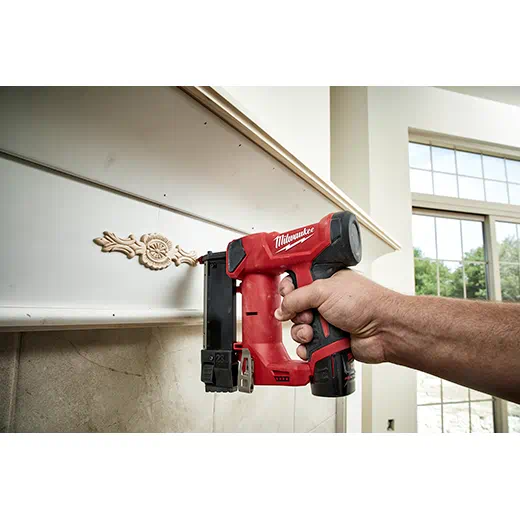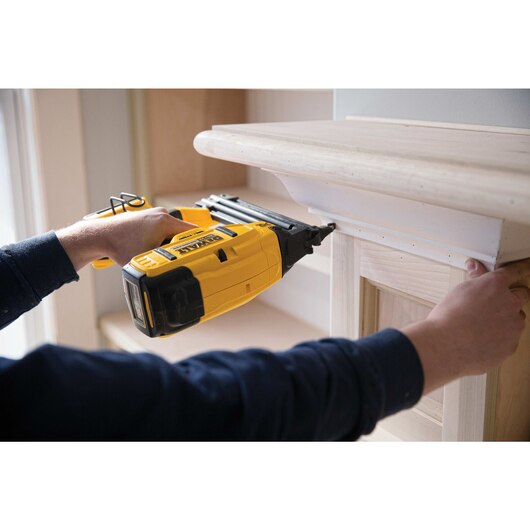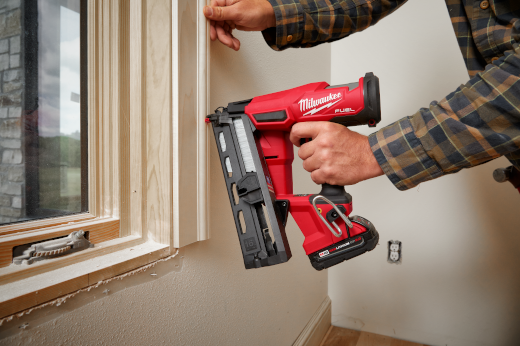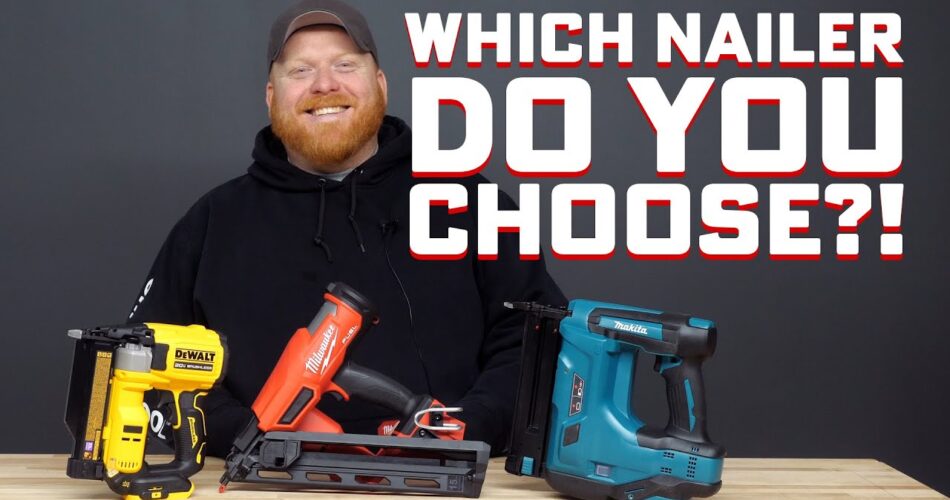Brad nailers, pin nailers, finish nailers; oh my! With a multitude of options and everyone’s own unique naming conventions for general tools (“grab that nail gun over there!” “hand me that hammer, would ya?”), it can get stressful figuring out which nailer is the right one for the job. A pin nailer might be too delicate for the door you’re trying to put up, but a finish nailer might be too powerful for that trim project you’ve got going on, and your boss only told you to get a “nail gun.” Stick with us for a bit before you go off and just grab the first one you see or the cheapest one you can find only to discover it’s completely useless on the jobsite, dear reader, and by the time we’re done, you’ll be a nailing master.
The first thing we should address before we jump in is the size of the nails you’ll be using in each machine. Nails play by pseudo-golf rules, meaning the smaller the size of the gauge, the larger the hole the nail will make. For example, a finish nailer’s 14-gauge nails will put a hole in a piece of wood that the pin nailer’s 23-gauge nails can fit into with a little wiggle room to boot. If you’re working on delicate material or intricate pieces, you’ll want a larger-gauge nailer with more finesse and control as opposed to if you’re working on siding or heavy-duty carpentry projects. Alright, with that out of the way, let’s dive into these nailers.
Pin Nailers
Pin nailers, as mentioned previously, are fit with the smallest sized nails, typically 23-gauge. The holding power on these nails is very minimal. You’ll probably want to make sure you’ve got plenty of wood glue handy if you’re running a pin nailer so you can get an additional boost in holding power without having to cover the thing in nails. These are optimal when you’re working on delicate projects like veneers, joining trim pieces, or something along those lines.

Brad Nailers
Brad nailers, on the other hand, will be your best option for an all-encompassing nailer. The thicker, typically 18-gauge, nails come in a variety of lengths and join nearly seamlessly to the wood piece you’re working on. While you shouldn’t have the need for wood glue with a brad nailer, you may want to have a bit of wood putty on hand to seal up any extra space that opens up in the hole. You will need to be mindful if you’re using a brad nailer on smaller, more delicate projects, though. While the 18-gauge may not seem like a huge jump from the pin nailer’s 23-gauge nails, brad nailers use a little more force to push the thicker nail through the material you’re working on and have been known to split many a project in the past.

Finish Nailers
Onto our final nailer, or should we say, the finish nailer. This nailer will rock your largest diameter nails, coming in between 14-, 15-, and 16-gauge. You definitely won’t want to use a finish nailer on small or delicate projects. These are made for heavy-duty materials like exterior trims, windows, doors, stair risers and treads to name a few. The holding power in a finish nail is insane, so no need to extra adhesives or wood glue, but maybe see if you can exchange it for some extra wood putty; you’ll probably be needing a lot of that to cover the sunken holes when you’re working with finish nailers.

In conclusion, the right nailer for you will truly be dependent on what you think you’ll need it for the most. Casual DIYer that maybe wants to do a little carpentry work around the house? Hey, have you met my friend brad? Roofing pros, housing folk, you’ll probably be in the market for a nice finish nailer, while your pals in furniture restoration (we all have pals in furniture restoration, right?) would probably go nuts with a pin nailer. Hopefully this guide was able to answer a few questions to at least get you on the right track; feel free to give us a call at 614-481-2111 if you have any additional questions and be sure to follow us wherever you consume your social media to stay in the know on everything OPT!


